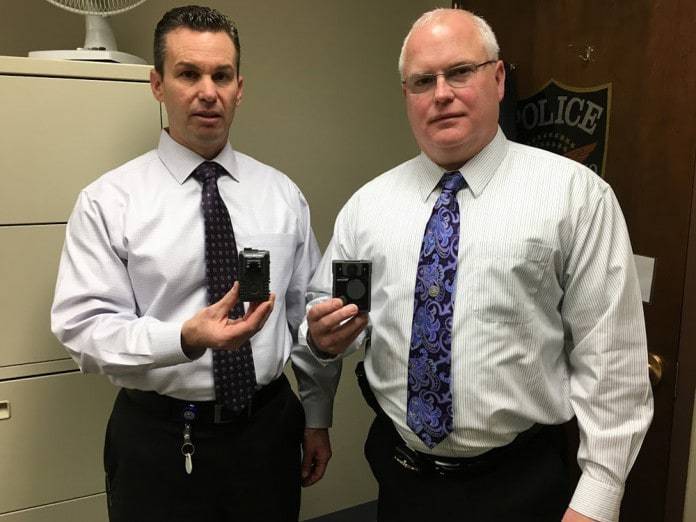
BRICK – Township police officers should be equipped with body cameras by late spring or early summer after a test phase of a variety of cameras is completed and a vendor has been chosen, officials said.
According to Brick Police Lieutenant Keith Reinhard and Sergeant Neal Pedersen, eight officers are currently equipped with different types of cameras during a 30 to 45-day trial period.
“We want different officers to experiment with them to see what they like and see what they don’t like, to see what works and what doesn’t work,” Reinhard explained from police headquarters on January 4.
Once the trials are completed, sometime around mid-February, Police Chief James Riccio would choose a vendor based on the officers’ input on the cameras that would include ease of use, battery life, durability, quality of the video, ability to make copies and more, he said.
The body cameras would be funded by a $112,500 federal grant that was written by township grant writer Tara Paxton with help from Reinhard, which should buy all the equipment to get started, he said.
Many New Jersey police departments are using the body cameras or in-car videos because of guidelines set by State Attorney General Christopher S. Porrino, who has been advocating for more public transparency, Pedersen said.
Car videos cost about $5,000 per car, and with some 40 to 50 township patrol cars, it is more costly than body cameras, and the car videos are limited to where the car is facing.
“Car videos are great for motor vehicle stops, (driving under the influence stops), and pursuits, and down the road we might incorporate them,” Pedersen said.
Most of the body cameras have 8 to 10 hours of battery power, and they are always recording, but the video is not being saved until the officer hits the record button.
“They would ‘record’ as soon as they’re dispatched; for every call, as soon as they get into the car to respond, they would turn it on and it stays on for the entire incident, whether it’s 15 minutes or 2 hours,” Reinhard said.
If the officer makes an arrest, the camera would be in “record” mode until the arrestee is brought into headquarters and processed, he said.
 Videos made during motor vehicle stops would be saved for 90 days; more serious offenses such as DUIs would be saved for 10 years; a video of something like a homicide or a shooting could be held forever, Reinhard said.
Videos made during motor vehicle stops would be saved for 90 days; more serious offenses such as DUIs would be saved for 10 years; a video of something like a homicide or a shooting could be held forever, Reinhard said.
Most cameras can record six to nine hours, he said. However, there are no enhancements for lighting at night.
The placement of the cameras is personal preference, but it should be centered somewhere between the officer’s chest and belt, and directed towards what the officers sees. The cameras also record sound, Pedersen said.
The patrol officers and traffic safety officers who are equipped with the cameras would follow guidelines that spell out when they can and cannot be used, he said.
“For example, if they get a general first aid call and someone has a medical condition, they wouldn’t use the cameras in order to protect privacy,” Pedersen said.
“They wouldn’t use them for routine calls in schools, hospitals, places of worship or treatment facilities unless there was something like a disorderly person at the hospital, then they would turn the camera on, but redaction software would block out the other faces.”
The body cameras would be in addition to other mandatory police equipment, which includes an expandable baton, pepper spray, handcuffs, a firearm with two extra magazines (each officer has a total of 40 bullets), a radio (with an optional shoulder microphone), and a bulletproof vest, which they wear all the time, Pedersen explained.
“I think the officers are looking forward to the new technology. Why not have a true record from start to finish?” Reinhard said.






